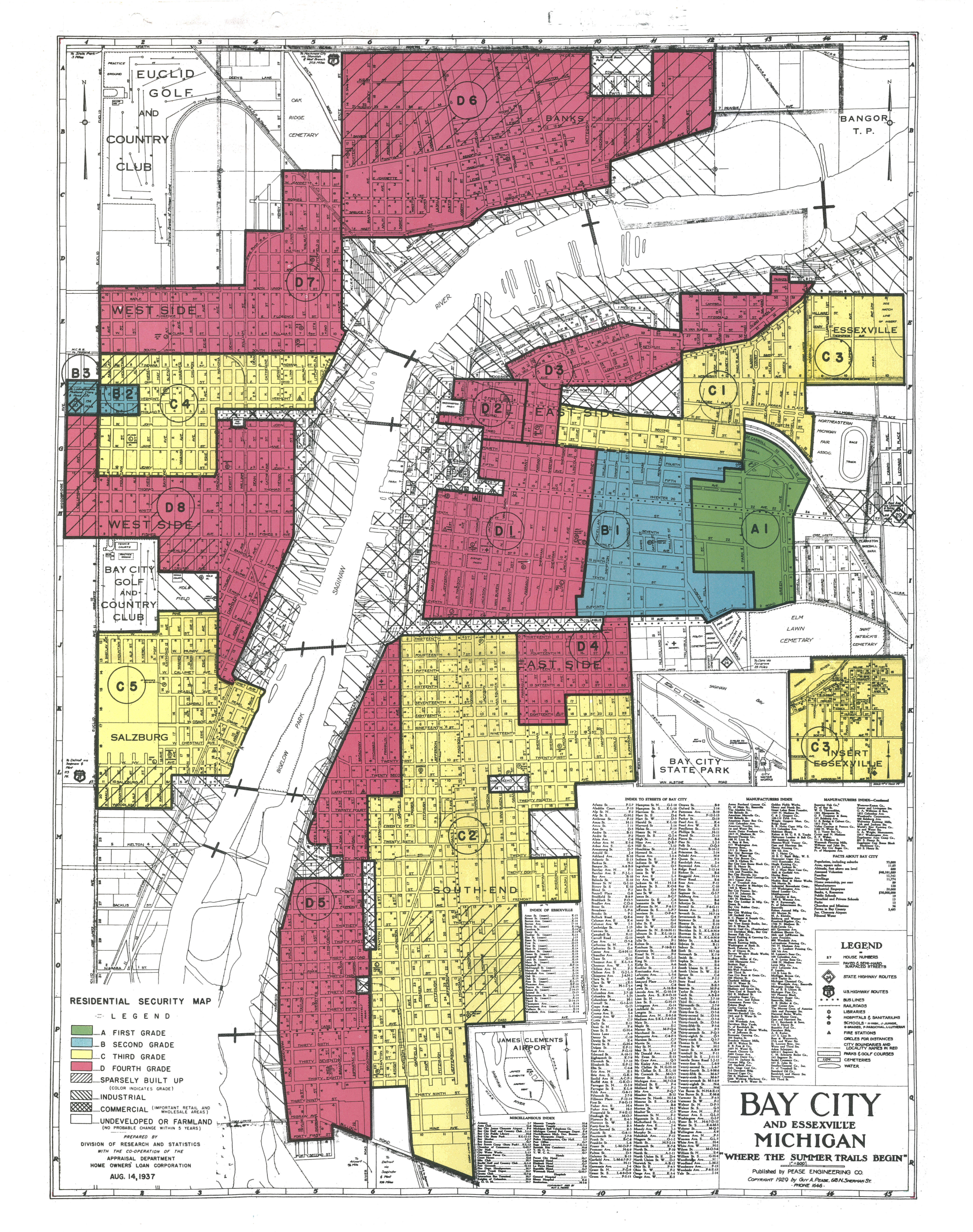Bay City
The federal government redline mapped Bay City on August 14, 1937. Consistent with the requirements of the government Underwriting Manual, the redline mapping specifically targeted residents of color, deeming their neighborhoods as “hazardous” to investment because they had residents of color or were even near residents of color. The original redlining map is shown below. While HOLC did not itself implement these redlining maps, it promoted these practices and showed private industry groups and the FHA how to reproduce these maps. We also have a map overlaying the original HOLC boundaries on present-day segregation, which starkly show the continued effects of these racist practices. The strong visual connection between original HOLC grades and present-day racial segregation, shows a legacy of redline mapping on present-day outcomes.

Bay City Neighborhood Grading Justifications
The racist language and explanations below are quoted from the “Area Description Files” filled out by government appraisers. The language and justifications are coarse and offensive. Nonetheless, it is important to remember our past in all of its coarseness is offensiveness to fully understand the context that we confront today, especially when developing equitable housing policies.
Redlined neighborhoods
Government appraisers redlined the northern neighborhoods of the eastern bank of the Saginaw River because they were the only part of the city where Black people lived. Government appraisers noted that this area was “completely undesirable.” Other neighborhoods were graded red due to their poor construction and the age of that construction.
Yellow-graded neighborhoods
Government appraisers gave most of the neighborhoods a yellow grade because, even though many of the estimated incomes were higher, these areas contained “foreign-born populations,” including Polish, German, and French. The government appraiser also noted that “some degree of movement of good type population [‘native white’] to this district.”
Blue-graded neighborhoods
All of the neighborhoods graded blue had “native white” and “white collar” inhabitants. Despite the “substantial age and obsolescence” of these areas, the “types of inhabitants” were sufficient to deem them blue.
Green-graded neighborhoods
The only neighborhood graded green is to the east of Bay City due to its inhabitants being “native white” and “business executives.”
The Legacy of Redlining in Bay City
We overlay the historical HOLC “redlining” map on present-day demographic data to show the persistence and continued relevance of these racist policies on present-day segregation. We mirror the racist HOLC color gradation to help visualize the continued segregation, as a lasting impact of redlining.

Higher segregation is associated with lower incomes, lower educational attainment, more crime, worse health outcomes, and higher inequality. But segregation is not the only lasting impact of redlining in Michigan Cities, or in Bay City. Researchers have shown that redlining also directly reduced many of these outcomes.
This research was conducted by Michigan State University Assistant Professor and Extension Specialist Craig Wesley Carpenter, Ph.D. (@DrCWCarpenter or cwcarp@msu.edu).



 Print
Print Email
Email